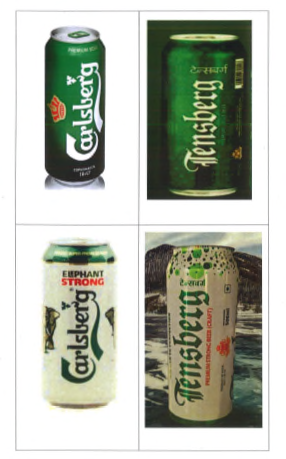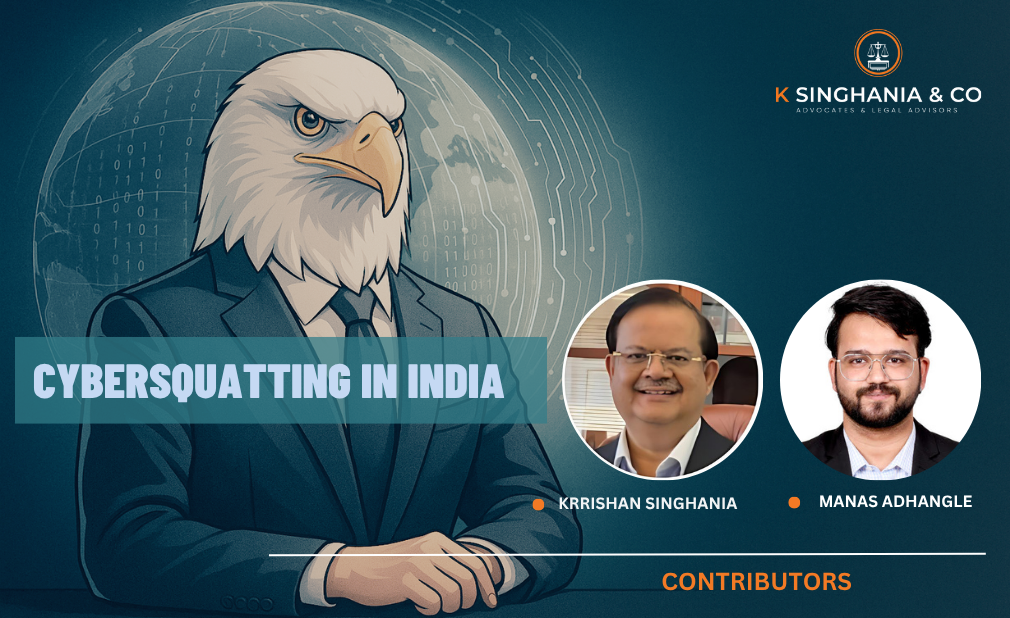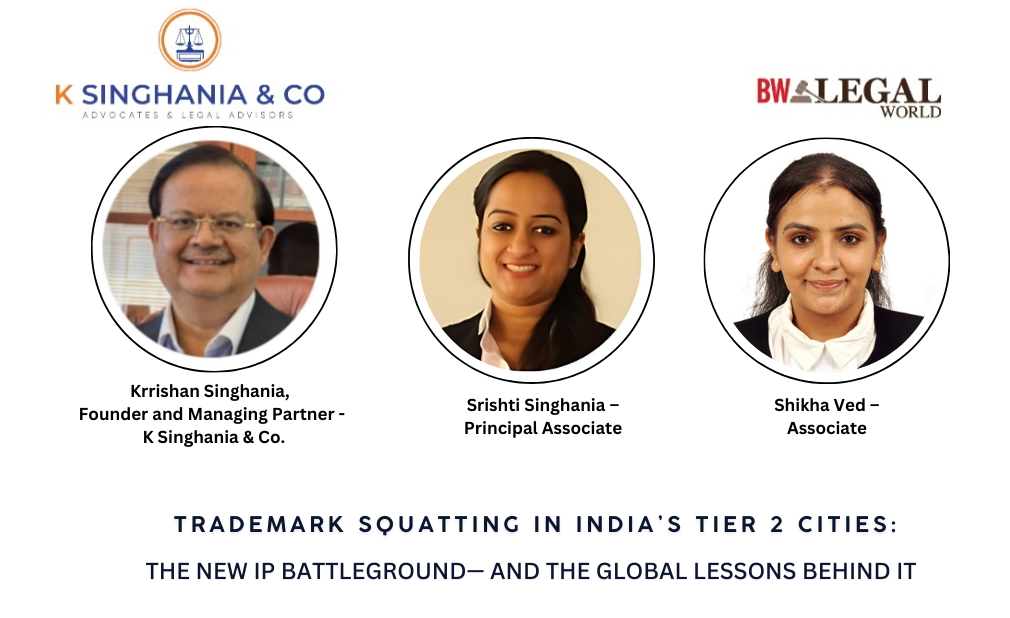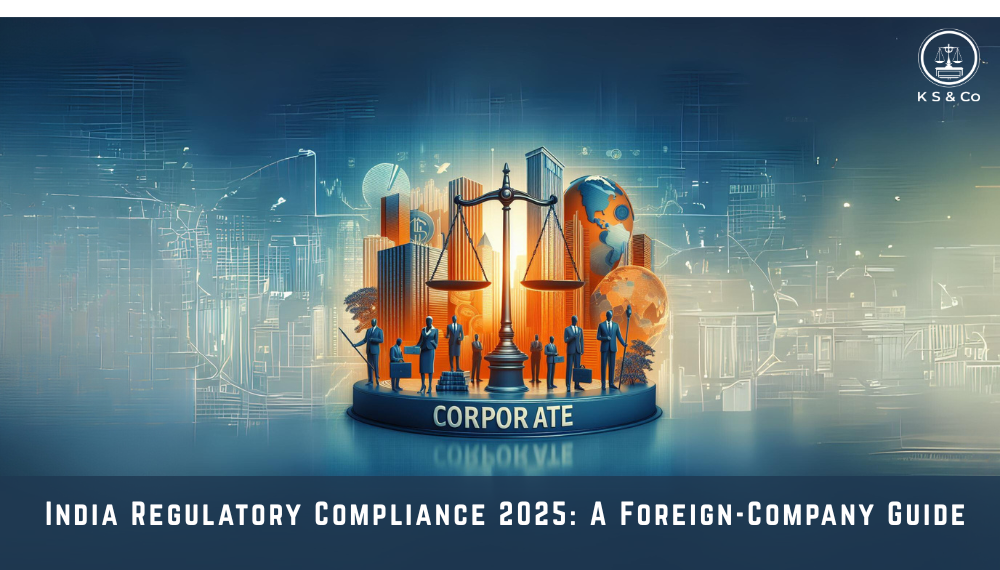Date of decision – 28th July 2022
FACTS OF THE CASE –
An informant filed a complaint against Vifor International Ltd. (Vifor) before the Competition Commission of India (CCI) alleging that Vifor had been indulged in anti-competitive practices for sale and distribution of a patented drug that deals in iron deficiency. The anti-competitive practices included –
- Abuse of dominance through price discrimination – as Vifor offered this drugs to public procurers at a price lower than it offered to individual customers.
- Refusal to deal: It appears that Vifor might have denied licenses to third parties seeking to either manufacture or import this drug.
On the basis of this complaint, CCI directed Vifor to share information about the patent, manufacturing/import licenses granted to third parties, and disputes relating to the patent. Vifor did not respond to the CCI’s direction and challenged the jurisdiction of the CCI. Before the CCI could decide on this issue, Vifor filed a writ petition before the Delhi High Court.
ARGUMENTS BY THE PARTIES –
The petitioner, Vifor contended that the information sought is commercially sensitive and would result in exposing it to criminal proceedings under section 271 of Swiss Criminal Code. They submitted that since the issues relates to the rights of the patent holder under the Patents Act, 1970, CCI has exceeded its jurisdiction in conducting an enquiry. They relied on the judgement of Competition Commission of India v. Bharti Airtel Ltd. and Ors., (2019) 2 SCC 521 which held that the jurisdiction of Telecom Regulatory Authority of India does not oust the jurisdiction of CCI. It was also contended that nothing in Section 3(5) of the Competition Act, 2002 restricted the rights of any person in respect of action, which may be initiated to restrain any infringement or to impose reasonable conditions as may be necessary for protecting any of its intellectual property rights under Patents Act, 1970.
The counsel for CCI submitted that the concern relating to disclosure of sensitive information was inaccurate. The petitioner could claim confidentiality with respect to the disclosure made at the time of investigation. They relied on the judgement of Monsanto Holdings Pvt. Ltd. and Ors. v. CCI & Ors. W.P.(C) 1776/2016, and submitted that the jurisdiction of CCI cannot be disregarded merely because the claim related to patents. The enquiry was sought in respect of anti-competitive and unfair trade practices. It was alleged that the petitioner was involved in discriminatory pricing with the drug being offered at a relatively lower price to public procurers and at much higher price to individual consumers. This was causing substantial harm to the consumers.
ISSUES BEFORE THE COURT –
Whether Competition Commission of India has jurisdiction in matters concerning to patents under the Patent Act, 1970?
JUDGEMENT –
The Delhi High Court reiterated that the CCI’s authority could not be disregarded solely on the ground that the actionable claim relates to patents as long as it is dealing with anti-competitive and unfair trade practices. The jurisdiction of CCI could be objected if the case dealt exclusively with the rights and liabilities under the Patent Act, 1970. Otherwise, the CCI is duly and statutorily empowered to deal with all cases dealing with anti-competitive practices, abuse of dominance and unfair trade practices.
The Delhi High Court disallowed the writ petition as it was based on unsubstantiated apprehensions. The Court allowed CCI to continue with the proceedings, taking into consideration the Petitioner’s objections
K S&Co COMMENTS –
This decision will have important consequences. Under the Patents Act, 1970, only prospective licensee can file an application for a compulsory license. However, after this decision any person could file a complaint before the CCI. Further, the CCI can grant more remedies as compared to the Patent Controller. Thus, consumers may take undue advantage of the law and approach the CCI for getting the price of the drug reduced.
Further the same conduct may give rise to claims both under the Patents Act, 1970, and Competition Act, 2002. For e.g. denial of licences, excessive pricing. In such a case, jurisdiction may lie before both forums. One forum, such as the CCI, may issue directions to a party to lower prices of its patented drug. However, after that the Patent Controller may not have any relief to give. Thus, it is important to ensure that the complainant chooses one forum. Other alternate could also be that the Patent Controller decides the issue before it goes to be decided by CCI. This was a solution proposed in the case of Competition Commission of India v. Bharti Airtel Ltd. and Ors., (2019) 2 SCC 521.

Delhi High Court, 2nd August 2022
FACTS OF THE CASE –
The Diageo Brands B.V. (Plaintiff No. 1) is a manufacturer, seller and distributer of alcoholic beverages and proprietor of marks ‘Vat 69’ and ‘Black & White’. United Spirits Ltd. (Plaintiff No. 2) is Indian distributor of Plaintiff No. 1’s brands, i.e. ‘Vat 69’ and ‘Black &White’, and also manufactures, sells, and distributes it’s own brand, ‘Black Dog’. Plaintiff No. 1 is the proprietor of registered bottle design known as “Hipster” in India, which is used for selling ‘Black Dog (Black Reserve)’, ‘Black Dog (Golden Reserve)’, ‘Vat 69’ and ‘Black & White’. Plaintiffs also claim common law rights in trade dress of “Hipster” bottles. Plaintiff No. 1 launched the “Hipster” bottles in India in May, 2019.
The Defendant, Great Galleon Ventures Limited, is the manufacturer of alcoholic beverages sold under the brand ‘GOA’ and its variants, ‘GOA GOLD’ and ‘GOA SPIRT OF SMOOTHNESS’.
The Plaintiffs have alleged that the Defendant has been infringing their design rights and passing-off its the “Hipster” bottle design by selling its alcoholic beverages in 180 ml bottles having a similar design from February 2021. The Plaintiffs have sought for a permanent injunction and ancillary reliefs against the Defendant. The design of Plaintiff’s bottles (left) and Defendant’s bottles (right) is shown above:
On 23rd February 2021, the Delhi High Court had passed an ex parte ad-interim injunction in favour of the Plaintiff restraining the Defendant from selling the impugned bottles. The Defendant opposed this ex parte ad-interim injunction and sought for vacation of this order.
ARGUMENTS BY THE PARTIES –
The Plaintiffs argued that their design is unique and distinctive as its essential features is modelled on the shape of a smart phone, and never been adopted by a third-party. It’s essential features include: (a) tall and sleek look, (b) rectangular shape, (c) smooth rounded shoulders and symmetrical edges, (d) protruding V-shaped neck situated at the middle of both shoulders and (e) two-toned rimmed and rounded cap. They have spent considerable amount of expenses on marketing and promoting “Hipster” bottles and building goodwill and reputation in India. The “Hipster” Bottles have been a massive success as the Plaintiffs have sold bottles worth Rs. 100 crores in 1.5 years. It was alleged that the Plaintiff’s turnovers shows Defendant’s dishonest intention of adopted the impugned design for encashing upon the Plaintiff’s reputation. The Defendant was also deliberately selling the impugned bottles at a lesser price. The Plaintiffs also argued that they have common law rights in their trade dress, which acts as a source identifier.
The Defendant argued that the “Hipster” bottle is not novel and unique since it was a trade variant inspired by the “hip flask” design, which is extremely common in the liquor trade. The Plaintiff’s registered design lies in the public domain. The registered design is also functional with purpose of fitting in a pocket. The Defendant further alleged mosaicing in the Plaintiff’s design stating that they had created a design that was a combination of various other designs that were already commonly being used in the industry. Thus, there was no passing-off as designs of both goods were common-to-trade. The Defendant denied any infringement as their product displays the brand name “GOLD” due to which there would be no likelihood of confusion. The Defendant also argued that the Plaintiffs were not proprietors of the registered design as it was neither created nor assigned to them. The Defendant argues that injunction cannot be granted as validity of registration of the “Hipster” bottle design is questionable.
JUDGEMENT
The Court decided on the following issues as follows:
- Who is the proprietor of the registered design?
The Court held that Plaintiff No. 1 was the proprietor of the registered design as per Section 2(1)(j) of the Designs Act 2000. As per Section 2(1)(j) of the Designs Act 2000, Plaintiff No. 1 will be the proprietor of the registered design of “Hipster” bottles as the design was created by an agency for Plaintiff No. 1. The agency does not retain any rights in their work.
- What is the legal effect of registration of a design for deciding the relief of grant of injunction?
The Court observed the differences between design law and trademark law. Under trademark law, trademark registration is a prima facie evidence of validity. However, design registration is not a prima facie evidence of validity. After a design is registered, the design is open to public inspection and an aggrieved person could file an application for cancellation of a registered design. However, if a design appears to be prima facie validly registered and Plaintiffs are able to demonstrate a strong prima facie case of infringement/passing off, then the Courts would grant injunction. However, as the Defendant has questioned the validity of the registered design, the Court will need to look at these grounds on a prima facie basis. The Defendant is also required to demonstrate the grounds of cancellation with reasonable certainty.
- Is there a prima facie case to establish fraudulent and obvious imitation of the plaintiff’s registered design, so as to warrant an injunction?
The Court assessed the pictorial designs of both the products and held that “the test is not to look out for subtle dissimilarities, but rather, to see if there is substantial and overall similarity in the two designs.” The Court concluded that the Defendant’s impugned bottles bear a remarkable similarity to the Plaintiff’s registered design. The Court also noted that Plaintiffs had established a prima facie case of infringement as earlier the Defendant was selling its product in a different design bottle, which was distinct and different from the Plaintiff’s design and trade dress. The Defendant also admitted that were well aware of the Plaintiff’s “Hipster” design and inspected the Plaintiff’s bottles before manufacturing the impugned bottles.
It was also established that balance of convenience lies in favour of the Plaintiffs. The Defendant was selling its products in Madhya Pradesh only and Defendant was selling its products in another bottle after the ex-parte ad-interim injunction. It was also concluded that the Plaintiff will suffer irreparable harm. This was evidenced by net sales from May, 2019 to September, 2020, Plaintiffs recorded a net sale of INR 100.73 crore while Defendant sold inventory worth only INR 24 lakhs. Thus, an injunction against the Defendant was warranted.
- Has the Defendant demonstrated any ground of challenge of a registered design under section 19 of the Design Act, and if so what is it’s effect?
The Defendant argued that Plaintiff’s registered design should be cancelled on the ground that it was not new or original, due to mosaicing and functional nature of the “Hipster” bottle design. The Court concluded that the prior art produced by the Defendant was dissimilar to the Plaintiff’s registered design. It was also observed by the Court that a design may already available in the public domain but it will be protected as “original” if its commercial application is new and original. The Court observed that hip flask is not new or novel invention by itself; but Plaintiff’s product is new as it is the first to apply features of a smartphone to pre-packaged alcohol. The distinguishable features of the “hipster” bottle give it aesthetic appeal that has not been conceived before. Thus, Plaintiff’s registered design was novel and original on a prima facie basis.
The Court rejected the defence of mosaicing and held that Plaintiff was allowed to take inspiration of pre-existing designs as long as they are able to apply the same to create a new or original design. The Defendant had also failed to prove which known designed were combined to create the Plaintiff’s registered design. It was also held that the Plaintiff’s registered design was not prima facie dictated by function and was in fact unique as hip-flask design was applied to a 180 ml bottle and was inspired by smartphones.
- Is there similarity in the trade dress/ get up for constituting passing-off , and if so, can an injunction be granted on that ground?
The court drew a comparison between the Plaintiff’s and the Defendant’s packaging, The Court stated that a trade dress has to be seen as a whole to determine what features are distinctive enough to become a source identifier. The Court observed that the Plaintiff’s product’s black and gold colour scheme and tow-toned rimmed and rounded cap was common to trade. Thus, the Plaintiff’s trade dress could not be a source identifier. Plaintiff’s trade dress was also dissimilar to Defendant’s trade dress as Plaintiff’s products were marketed in three colours, black, white, and gold while the Defendant’s bottles are sold in colour variants of red and black. The Defendant’s product also boldly displayed the brand ‘GOA’ and there was a difference in price points of the goods. Thus, the Court was convinced a claim for passing off was not made out.
The Delhi Court grants an interim injunction against the Defendant.
K S&Co COMMENTS:
The Court lays down the principles for assessing the novelty of a design. It is important to note that a design may already available in the public domain but it will be protected as “original” if its commercial application is new and original. In the present case, the Plaintiffs were the first to apply the hip-flask design to a 180 ml bottle and create a design inspired by a smart phone.
The Court also makes a distinction between design infringement and passing-off a trade dress. The purpose of the trade dress is to be a source identifier, while a design is visually appealing to the eye, and may have a competitive advantage. In the present case, the designs of the Plaintiff’s and Defendant’s products were similar. However, Plaintiff’s trade dress or get up was not unique to be a source identifier and was different from that of the Defendant. Thus, design infringement does not always imply a case of passing-off.

CASE TITLE: Kaira District Cooperative Milk Producers Union Ltd. and Ors. v.. Maa Tara Trading Co. and Ors., CS 107 of 2020, IA No.: GA 1 of 2020, 1st September 2022, Calcutta High Court
FACTS OF THE CASE-
The Plaintiff is the registered proprietor of the trademark “AMUL”. The trademark “AMUL” is a brand known across India and the globe. The brand symbolizes a very Indian brand that has become a household name across the length and breadth of the country, cutting across classes. The trademark “AMUL”, irrespective of the nature of goods it is applied upon, is the sole repository and identifier of the plaintiff and its member. Thus, the it’s the Plaintiff’s case that “AMUL” being a well-known mark should be protected against non-competing goods.
In February 2020, the Plaintiff filed a suit against the Defendants for perpetual injunction on the ground of trademark infringement and passing off. The Defendant, a famous cake shop in Kolkata, was selling candles under the mark “AMUL” being offered on a complementary basis with purchase of a cake. The Plaintiff through its local representatives had obtained samples from the said cake shop and found that the Defendant had not only usurped the well-known trademark of the Plaintiff but also adopted a similar writing style as that of the plaintiffs registered trademark. Subsequently, the Plaintiff located the Defendant’s shop and obtained a larger pack of candles bearing the mark “AMUL.”
Despite publication of notice of the instant case on 20th and 22nd June 2022 in the English daily newspaper “The Statesman” and in Bengali daily newspaper “Bartaman”, the Defendant failed to file the Written Statement. The Counsel for the Plaintiff therefore prayed that the present suit should be decided expeditiously by invoking provisions of Order 8 Rule 10 of the Code of Civil Procedure, 1908.
The Plaintiff’s mark (left) and Defendant’s mark (right) is shown above:
JUDGMENT OF THE CASE:
The Hon’ble Calcutta High Court after hearing the submissions and examining all the materials available on record noted that the Plaintiff was the registered proprietor of the trademark “AMUL” from the year 1958. Further, in order to establish ‘trademark infringement’ under Sec. 29 of the Trademark Act, 1999, the Court relied on the case, The Royal Bank of Scotland Group PLC v. Sharekhan Ltd., 216 (2015) DLT 197, where the court was of the view that the rival marks should be compared as a whole. Where two rival marks are identical, it is not necessary for the Plaintiff to prove that the use of Defendant’s trademark is likely to deceive and cause confusion. The trademark registration shows the title of the registered proprietor and the things speak for itself.
In an infringement action, once the Defendant uses a mark, which indicates commercial origin, no amount of added matter intended to show the true origin of the goods could protect the Defendant No further proof is required, if Court finds that the defendant’s mark is closely, visually and phonetically similar to the plaintiff’s registered trademark. It is also important to note that consumers do not compare rival marks in a meticulous manner and the marks should be viewed from the perspective of an average man of ordinary intelligence.
In the present case, applying the previously mentioned test, this Court was of the view that the Defendant had tried to dupe the general public by using of an identical mark “AMUL” in respect of candles. The Defendant had violated statutory rights as well as the common law rights of the Plaintiff. Such usage inevitably leads to loss of revenue and impacts goodwill of the Plaintiff. The Defendant had infringed the registered trademark of the Plaintiff as well as committed the tort of passing off.
It was also decided that the present suit was a ‘commercial suit’ within the definition of the Commercial Court, Commercial Division and Commercial Appellate Division of High Courts Act, 2015. As the Defendants had failed to file the written statement, the present suit should be decided expeditiously under Order 8 Rule 10 of the Code of Civil Procedure, 1908.
K S&Co COMMENTS:
This decision reaffirms the position of law that well-known marks will get protection even against non-competing goods and services. Thus, it important for owners of well-known marks to protect their goodwill and take action against infringers selling non-competing goods or services.
This is also a welcome decision as the Court recognised that the Defendant was employing delay tactics. Thus, it decided the case expeditiously even though the Defendant had not filed the written statement.

CASE TITLE – Carlsberg Breweries A/S v. Tensberg Breweries Industries Pvt. Ltd. & Ors., CS(COMM) 646/2022, Delhi High Court, 16th September 2022
FACTS OF THE CASE
The Plaintiff, Carlsberg Breweries A/S, is the registered proprietor of the mark ‘CARLSBERG’, which was first registered in India in 1949 and first sold in India in 1904. The Plaintiff has also obtained registration of its mark ‘CARLSBERG’ in a device form and design registration of its green opaque bottle. The Plaintiff also asserts that its business has grown 19% in the past two years and earned an annual revenue of USD 9.879 Billion in year 2019.
The Defendants are engaged in the business of manufacturing and selling alcoholic and non-alcoholic beverages and have been marketing its beer under the mark “TENSBERG”. Defendant No. 3 has also filed an application to register the mark, “TENSBERG” on a “proposed to be used” basis.
The plaintiff’s products (left) and defendant’s products (right) is shown below:
The Plaintiff has filed a suit against the Defendants for trademark and trade dress infringement.

ARGUMENTS BY THE PARTIES
The Plaintiff alleged trademark and trade dress infringement as the Defendants were manufacturing and selling the beer under a deceptively similar mark “TENSBERG”. The Defendants were also selling their beer in a deceptively similar bottle, shape and colour scheme so as to cause confusion in the minds of the consumers. It was also argued that the Defendants intended to encash upon the goodwill and reputation of the Plaintiff.
On the other hand, the Defendants argued that they have been marketing and advertising their products on social media platforms since 2018.
The Defendants also claimed that the Plaintiff had misrepresented their case and concealed facts from the Court. They asserted that the Plaintiff had falsely stated in their plaint that they had come across the Defendants’ mark only upon viewing their application for registration of the mark on a proposed to be used basis. In fact, the Defendants presented a copy of an order passed by the Excise Office of Dehradun, in the state of Uttarakhand on the 24th April, 2019 when permission for selling the Plaintiff’s as well as the Defendants’ beer was granted. Thus, the Defendants claimed that the Plaintiff had knowledge of the Defendants beer since 2019. Furthermore, there are various other marks registered with the suffix “BERG”. Since the marks “CARLSBERG” and “TENSBERG” have different prefix, there can be no likelihood of confusion.
JUDGEMENT
The Delhi High Court found that there was deceptive, visual and phonetic similarity between the two mark on a prima facie basis. It was also held that the Plaintiff being the registered proprietor and prior adopter of the mark ‘CARLSBERG’ has better rights over the Defendants. It was also held that, on prima facie basis, Defendant’s bottle and Can was deceptively similar to that of the Plaintiff with the same colour scheme of green/ white, placement of the marks and appearance of the crown. It was held that an unwary consumer will not minutely scrutinise both the trademarks and trade dress and is likely to get confused.
The Court also noted that the permission for sale of beer in the State of Uttarakhand, cannot be a proof of the actual use of Defendant’s mark. The Court also rejected the argument of the Defendant with regard to the various marks with suffix “BERG” as the Defendant had violated the rights of the Plaintiff by using a similar mark as well as similar packaging of the product. The conduct of the Defendants implied a prima facie intent to ride on the reputation and goodwill of the Plaintiff.
Therefore, the Court granted an ad-interim injunction in favour of the Plaintiff, while making it clear that the balance of convenience lay in favour of the Plaintiff and they would suffer irreparable harm if the interim order was not granted.
K S&Co COMMENTS:
A product’s general appearance, or get-up makes it distinguishable or easy to recognise it in the marketplace. The “trade dress” of a product is protected under section 2(d) of the Trade Marks Act, 1999. This decision reaffirms the position of law for determining trade dress infringement, the infringement must affect the total image or the overall impression of the plaintiff’s product, packaging and advertising. It is important for trademark owners to protect not only their trade mark but trade dress/packaging as well. It is important for the trade dress to be unique so that it helps the consumer to identify with the source of the product.
Disclaimer – We do not claim any proprietary rights on the photographs used in the newsletter. The photos have been taken from public sources and judgments.






